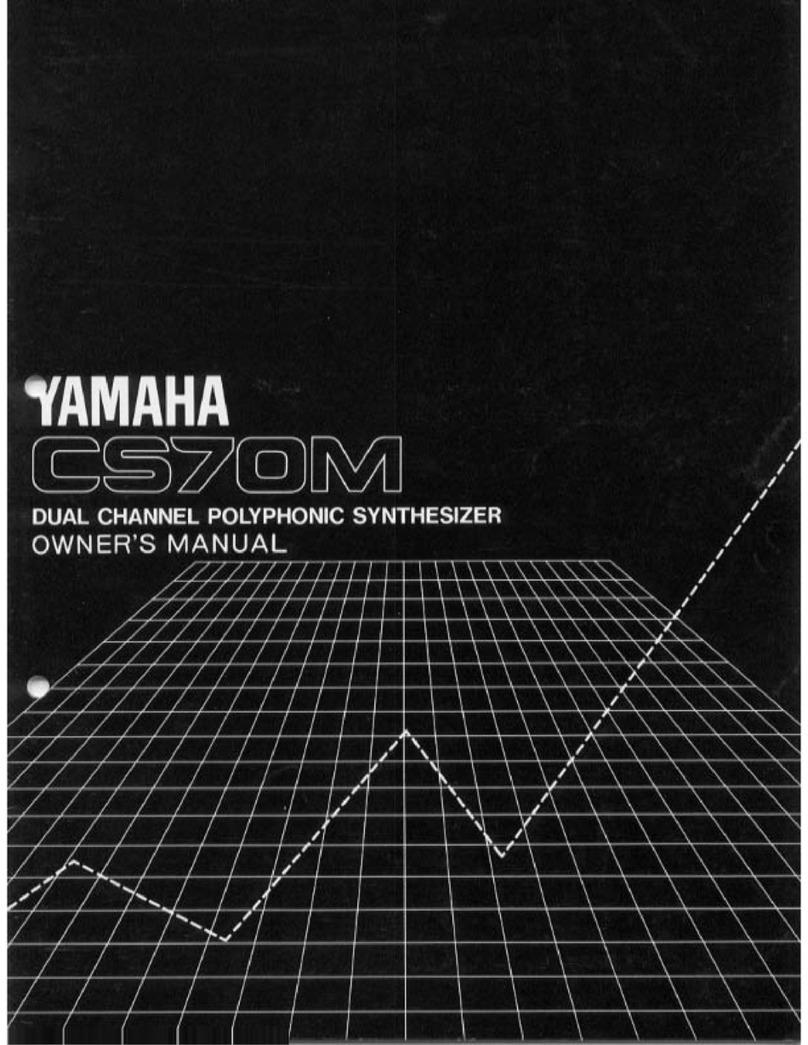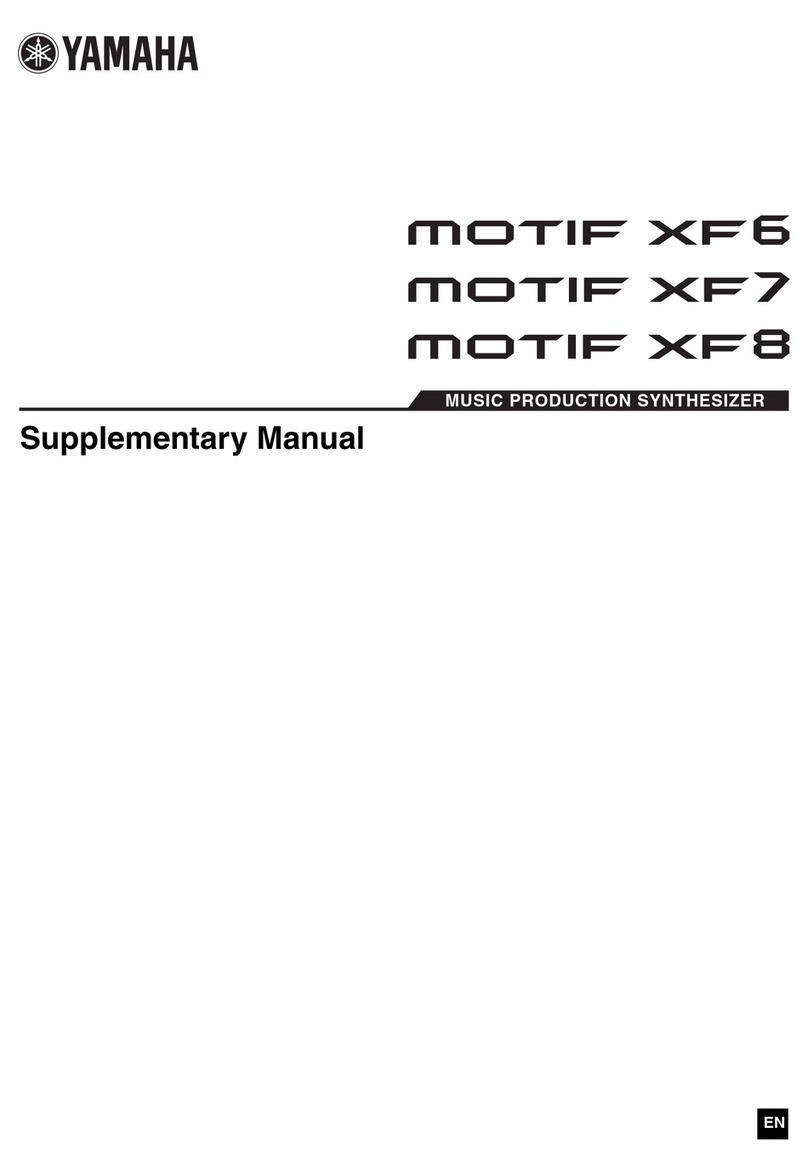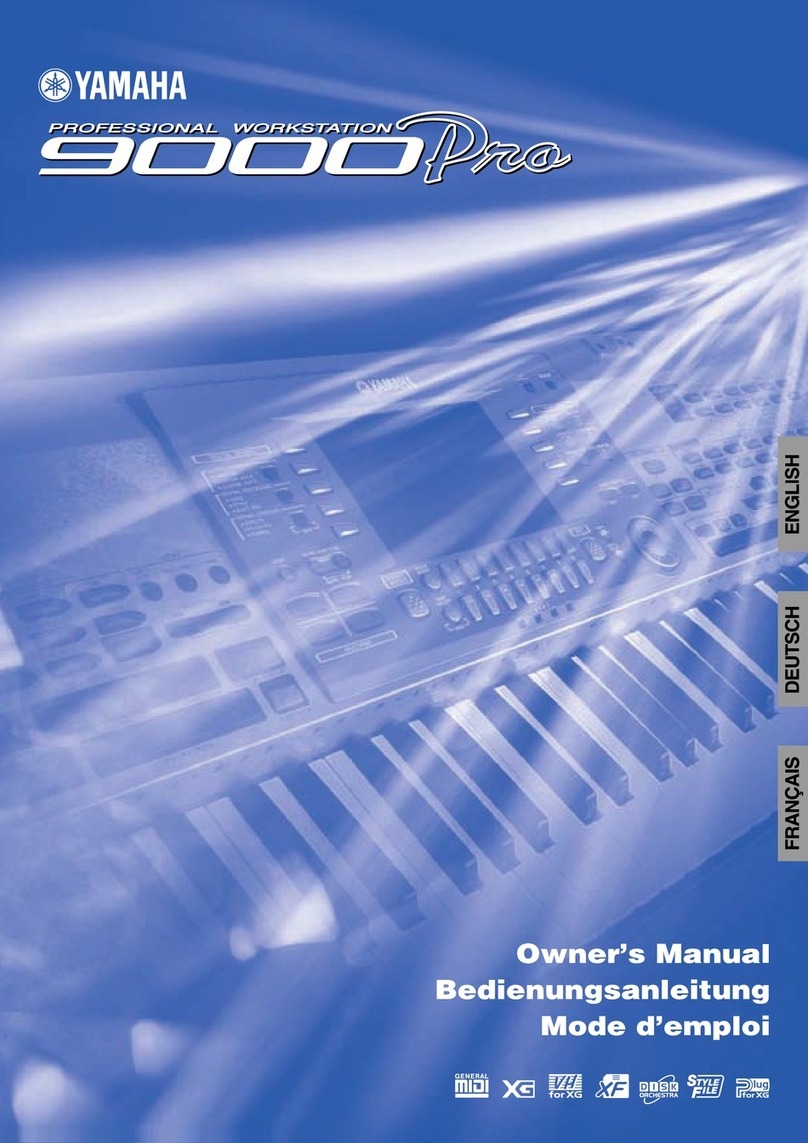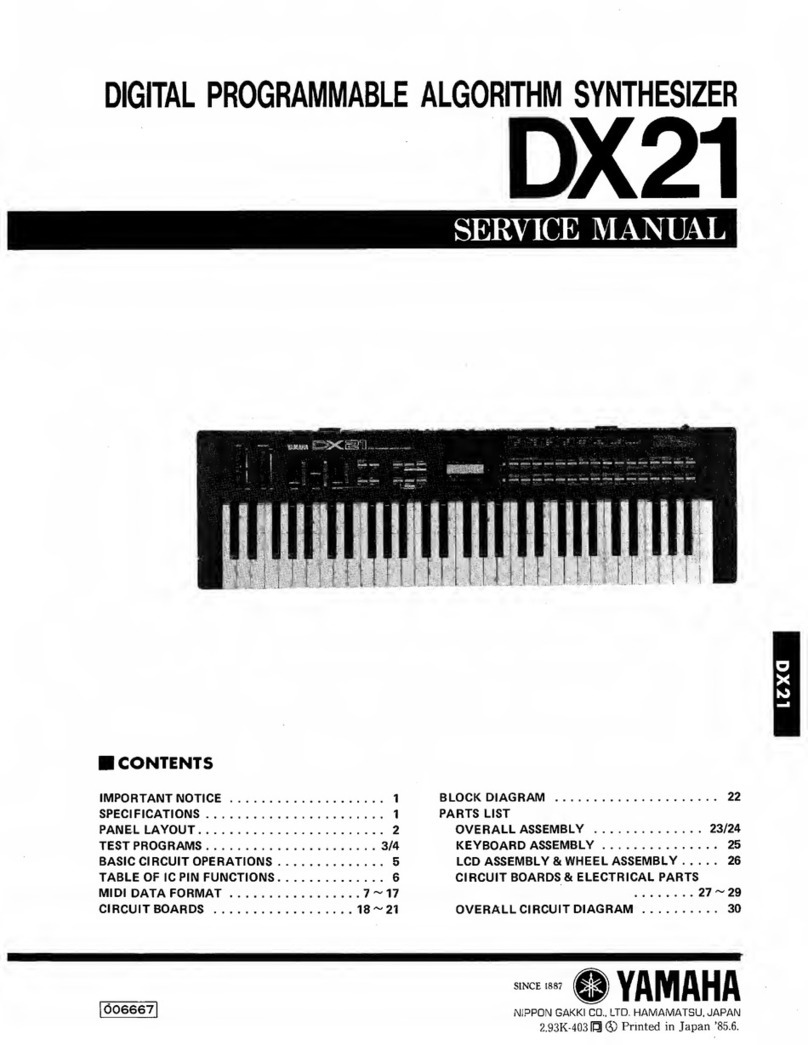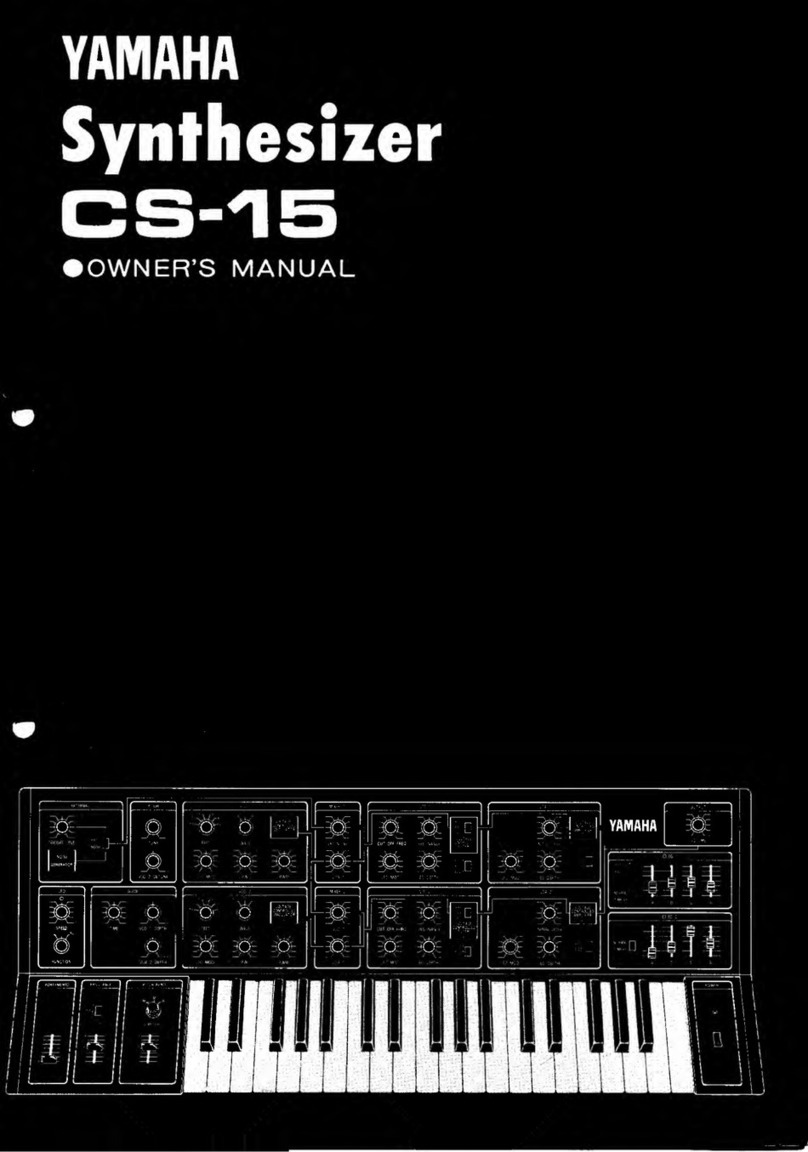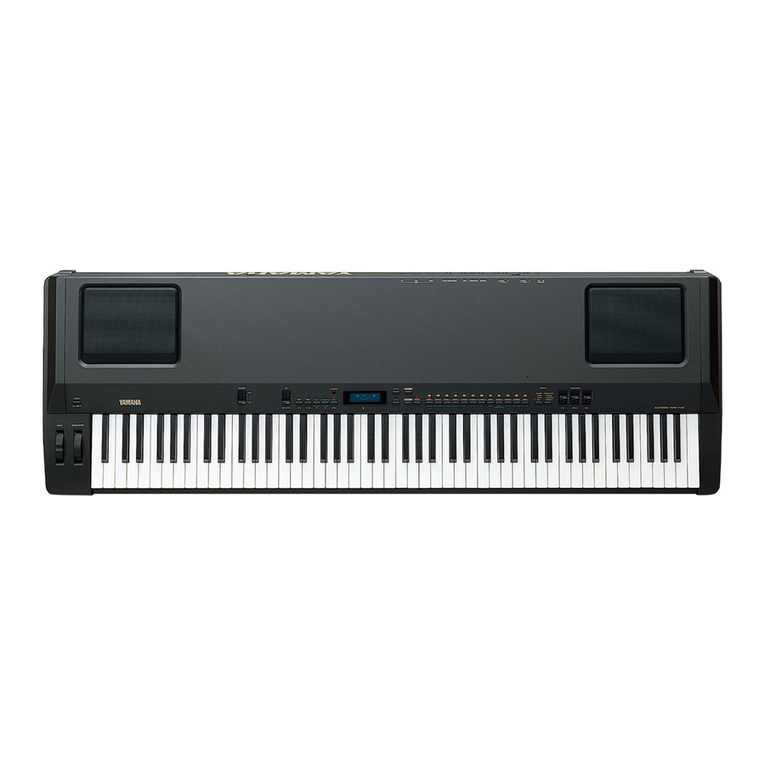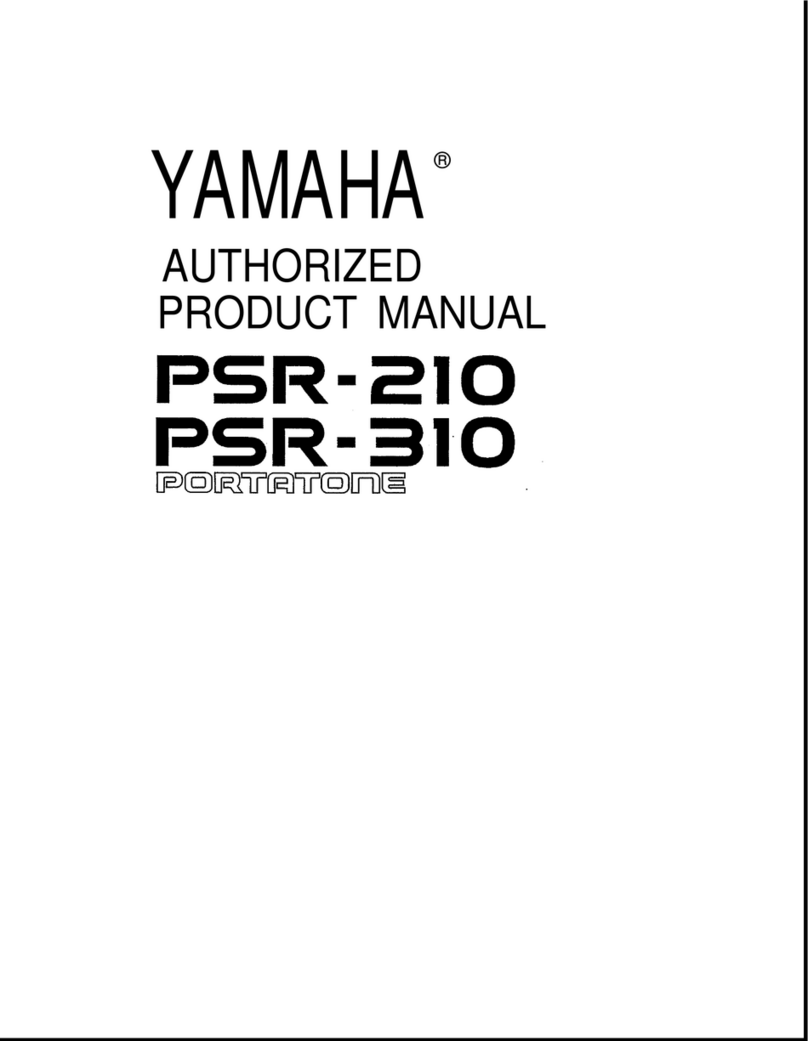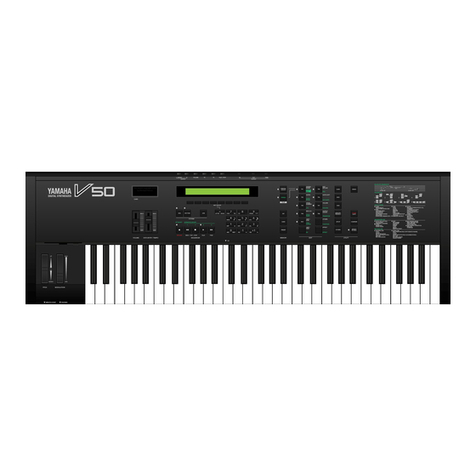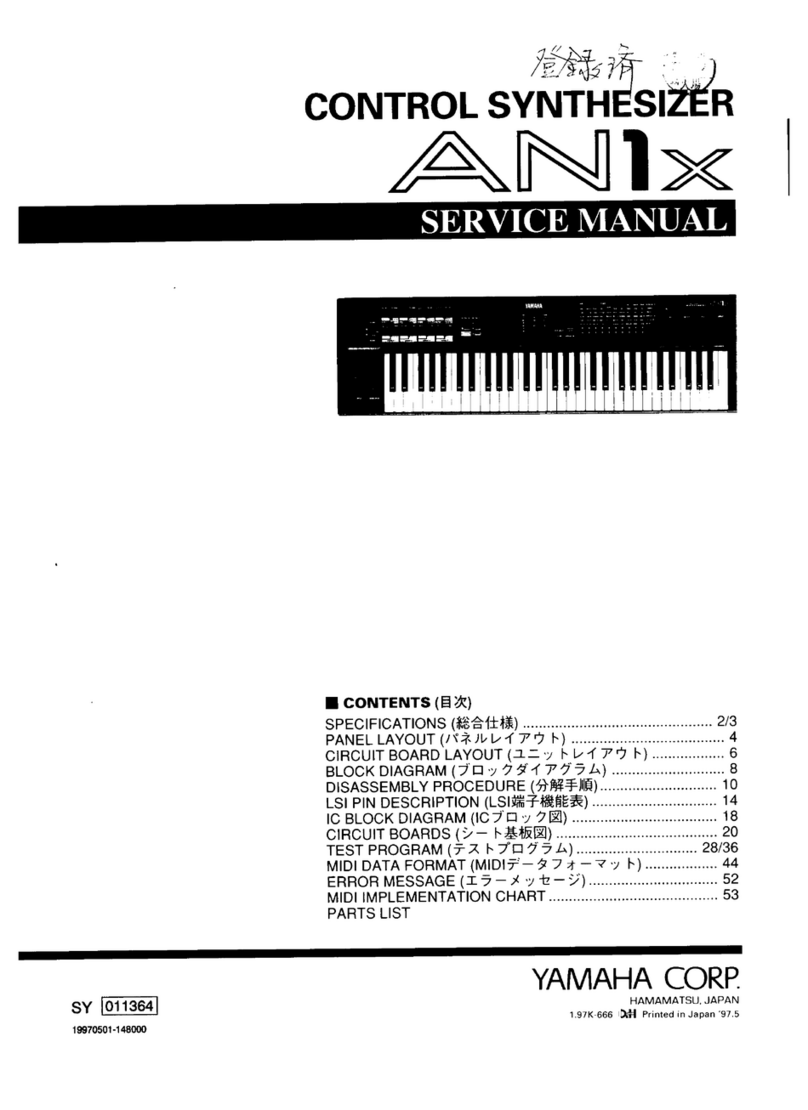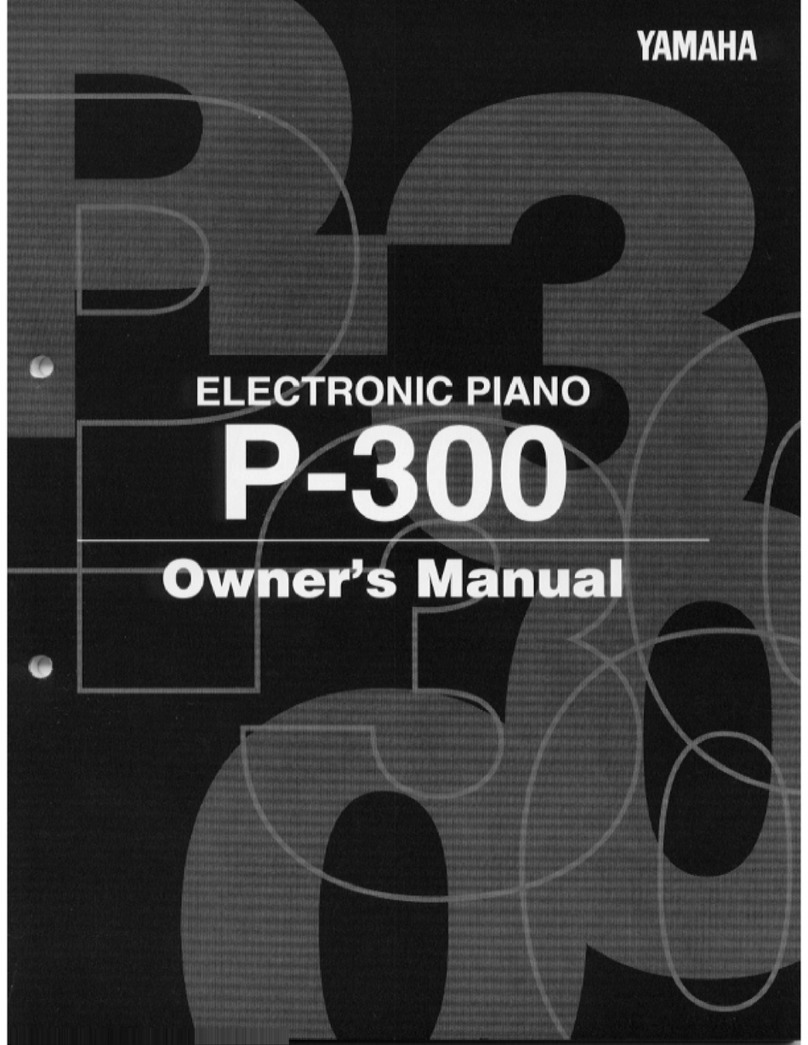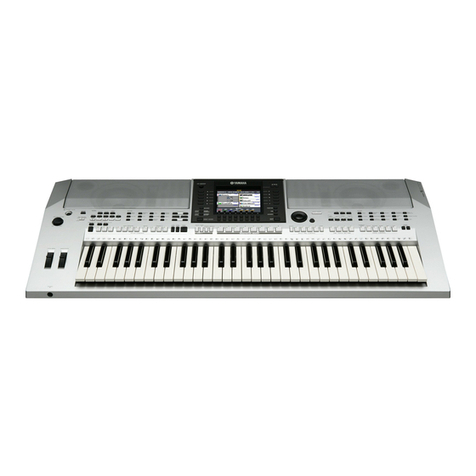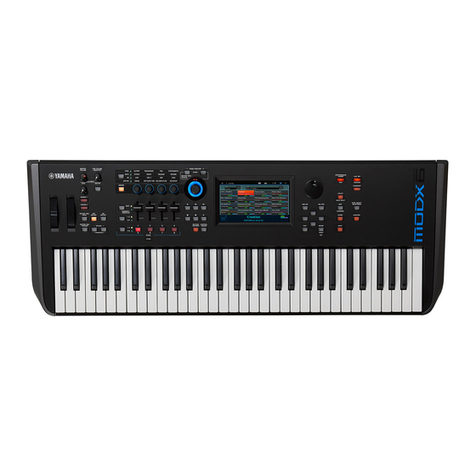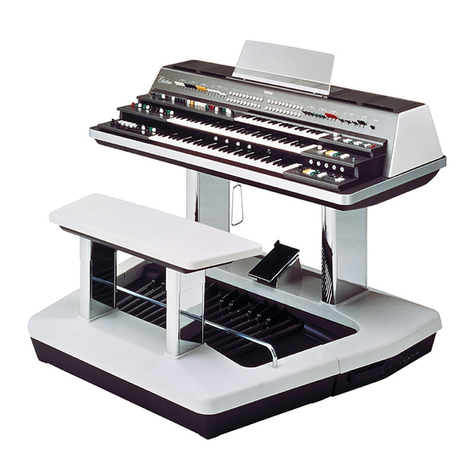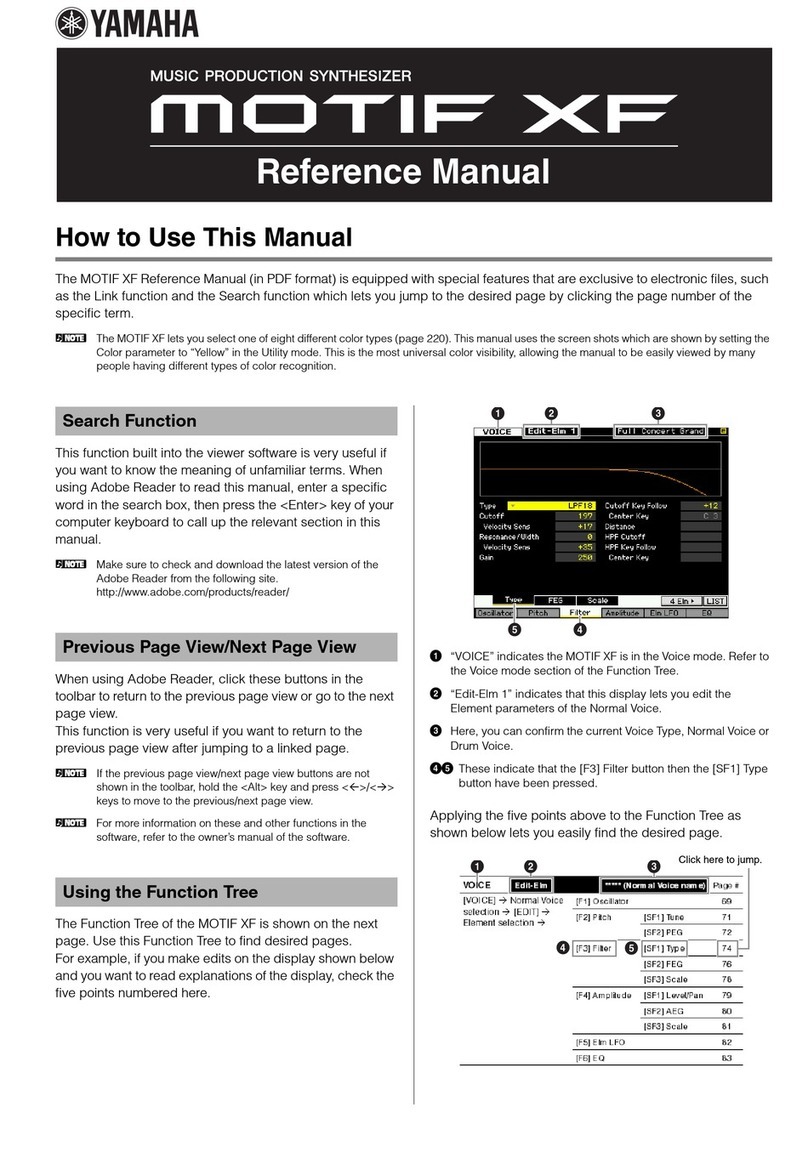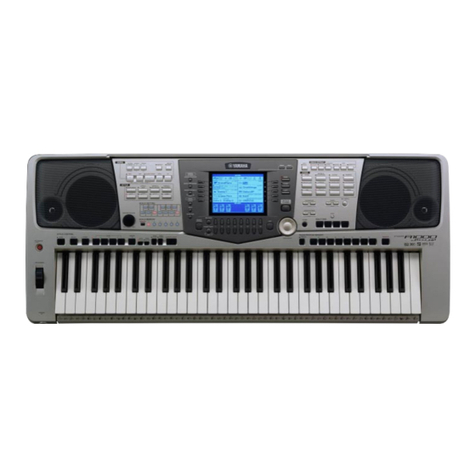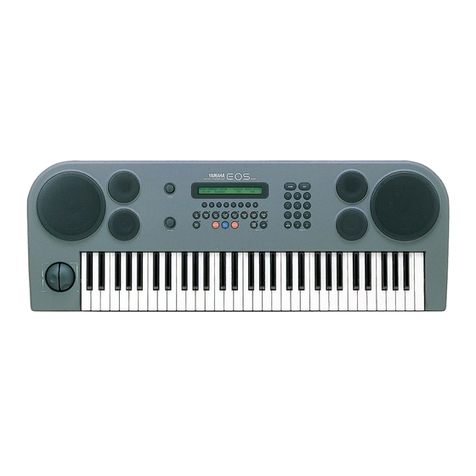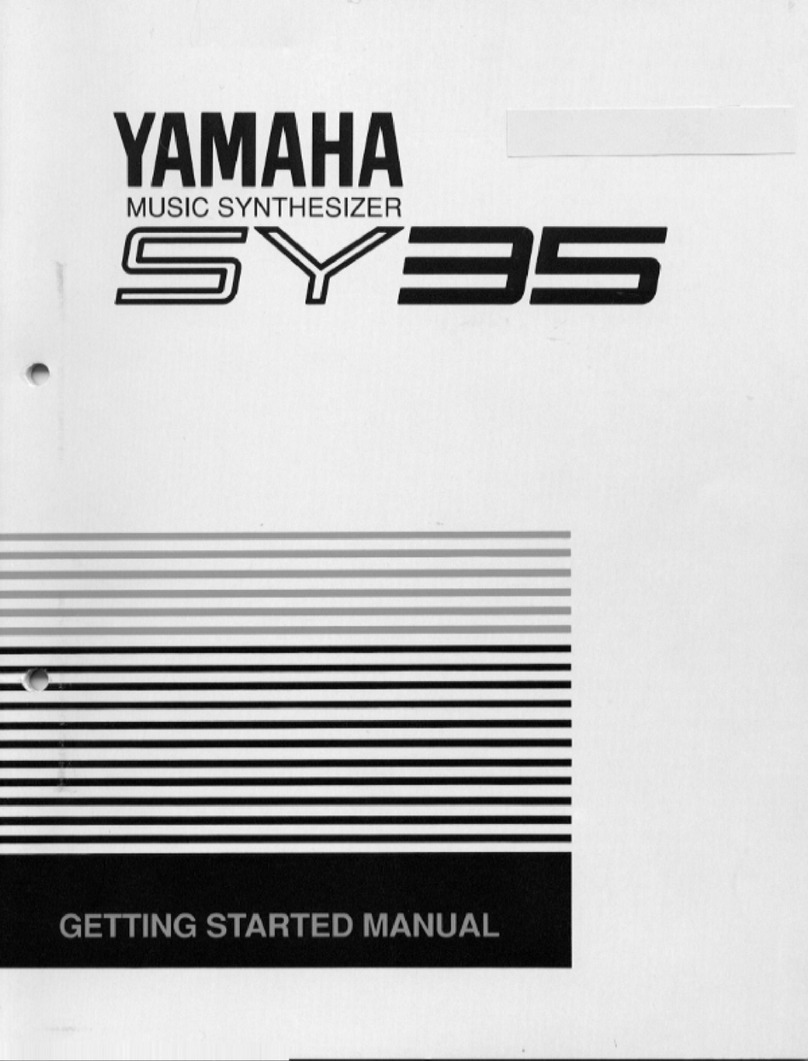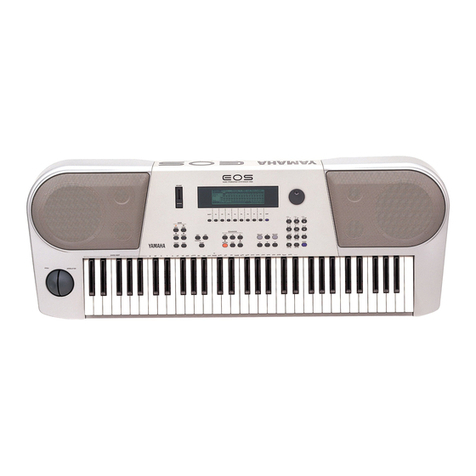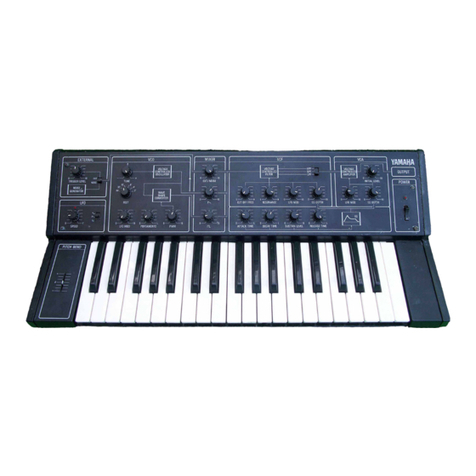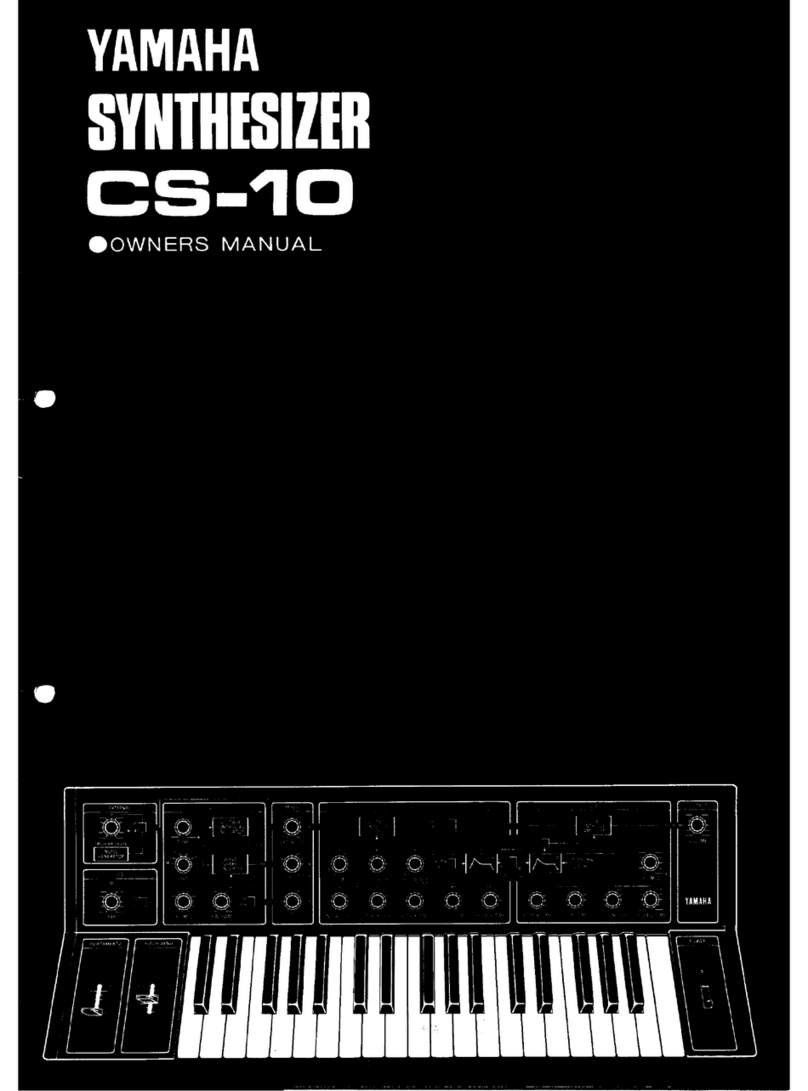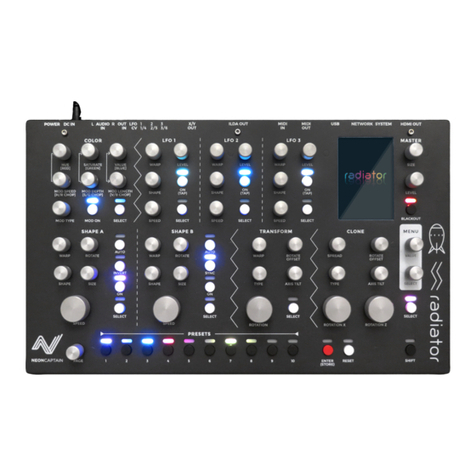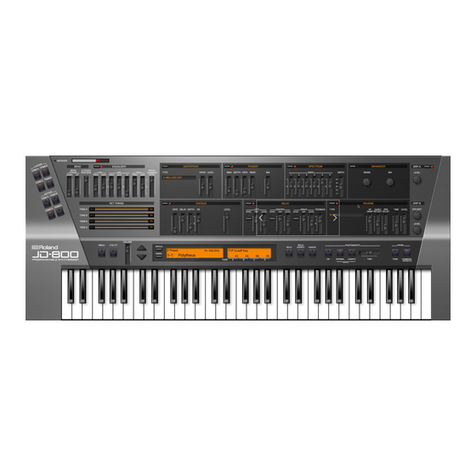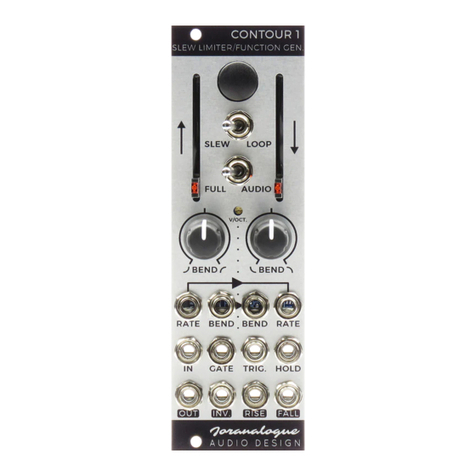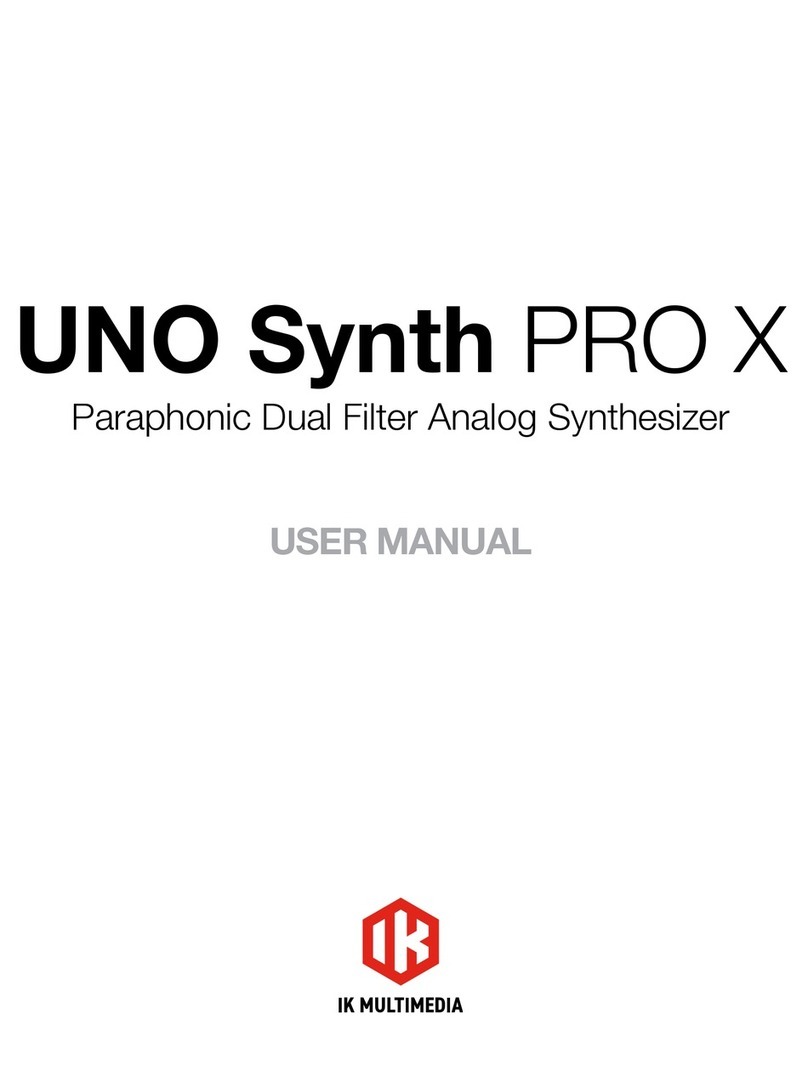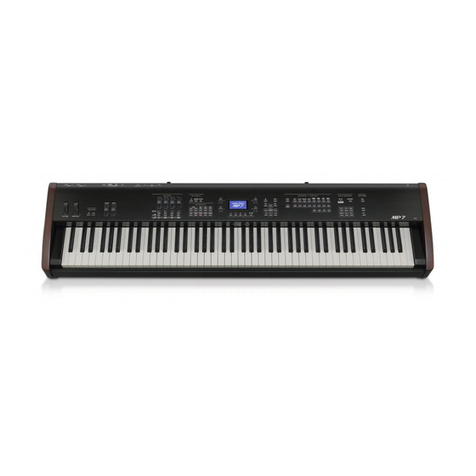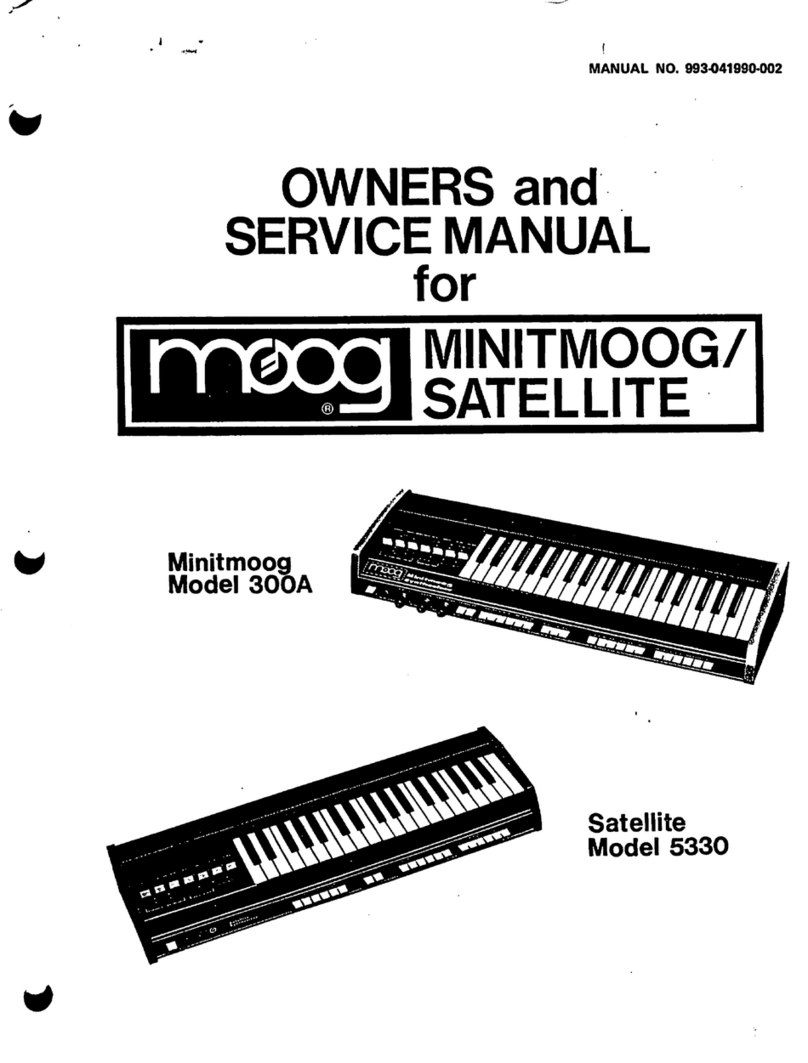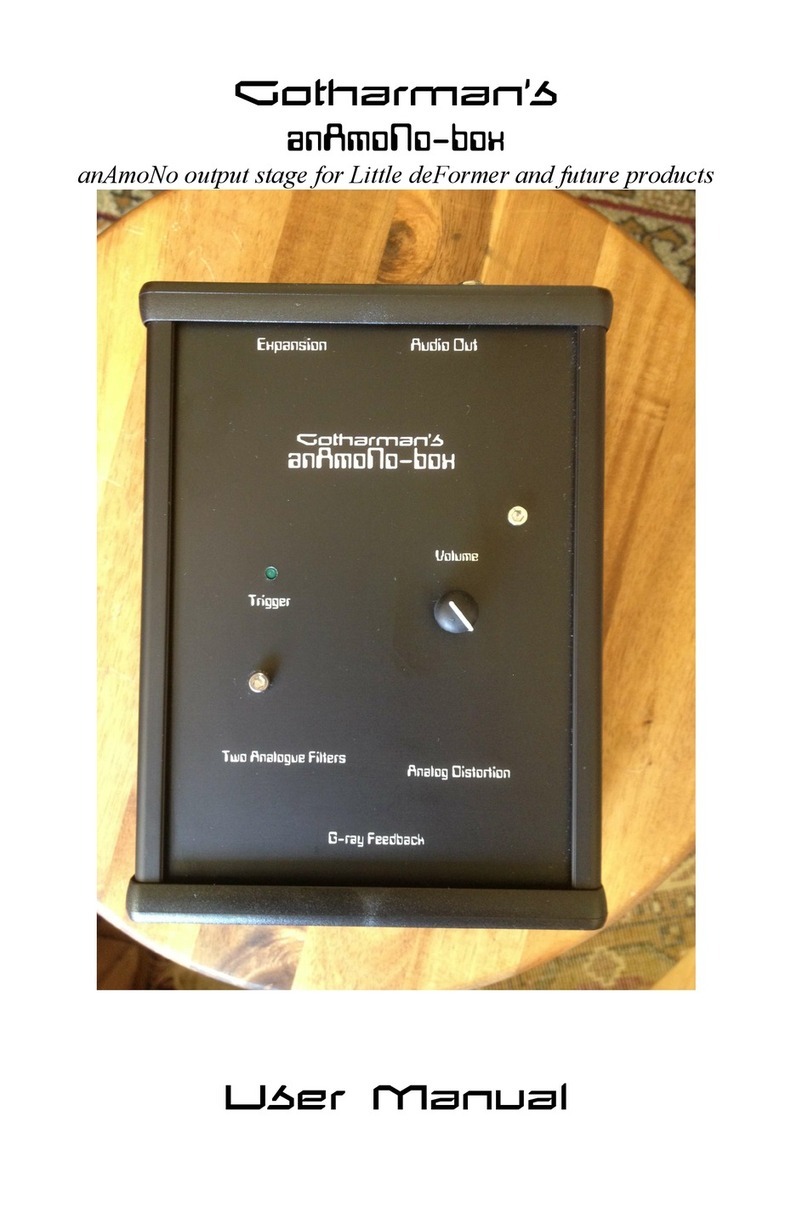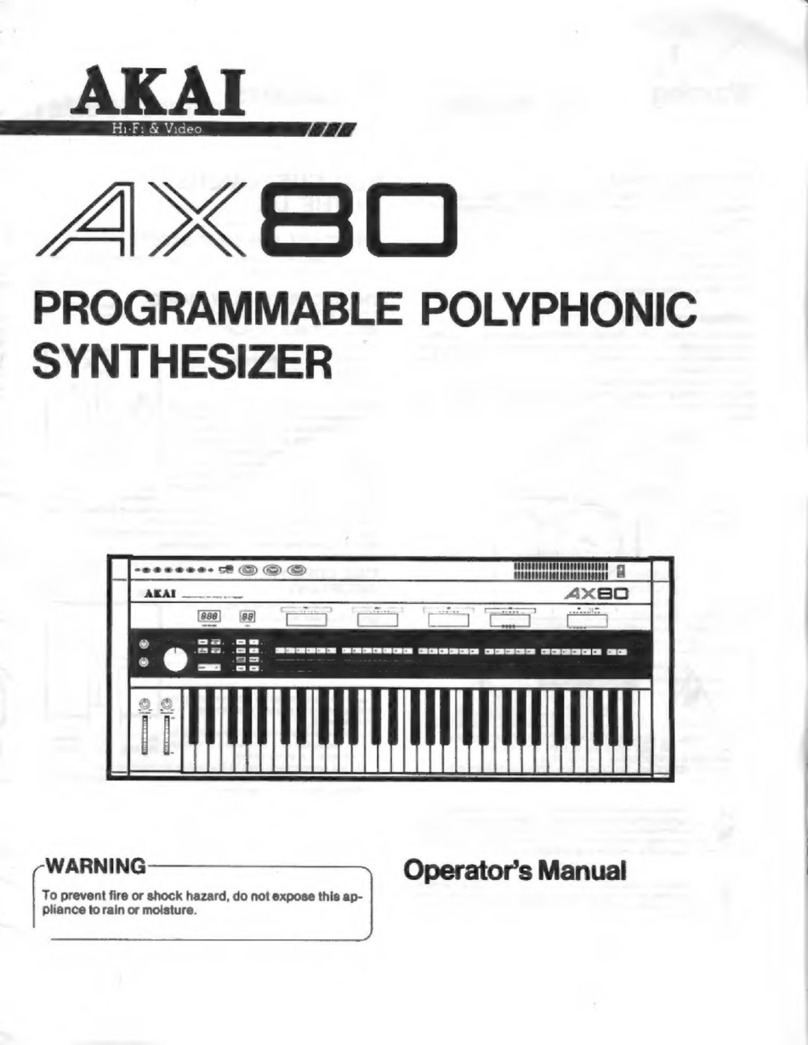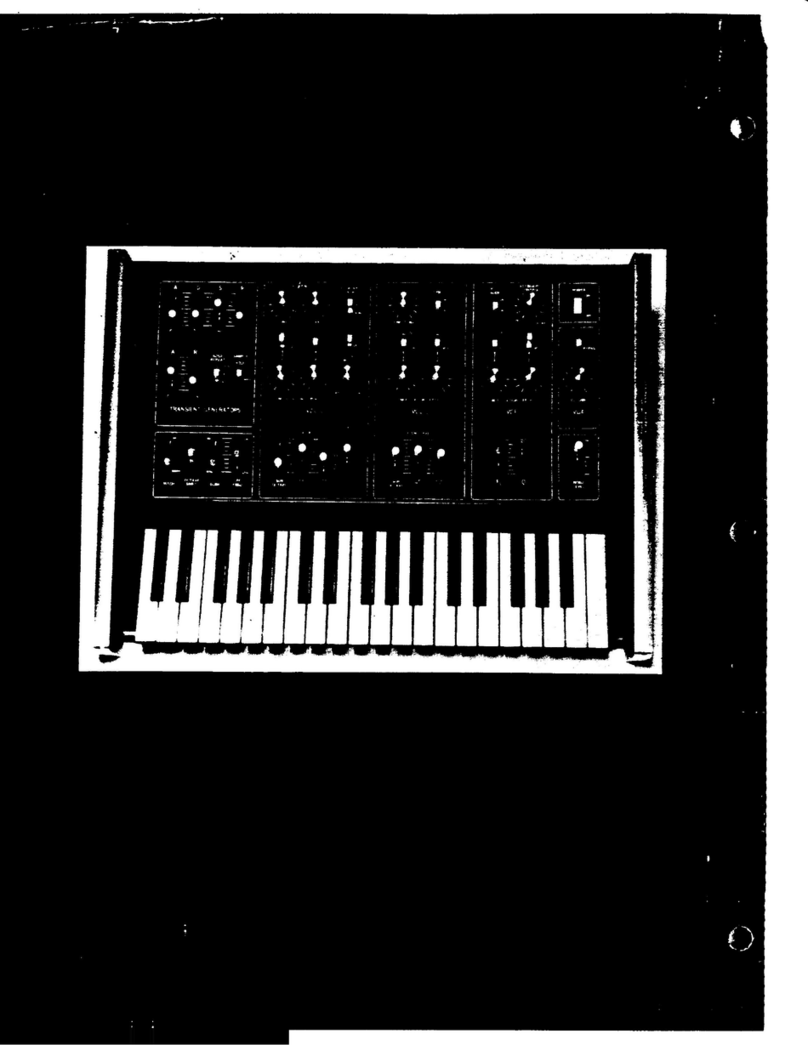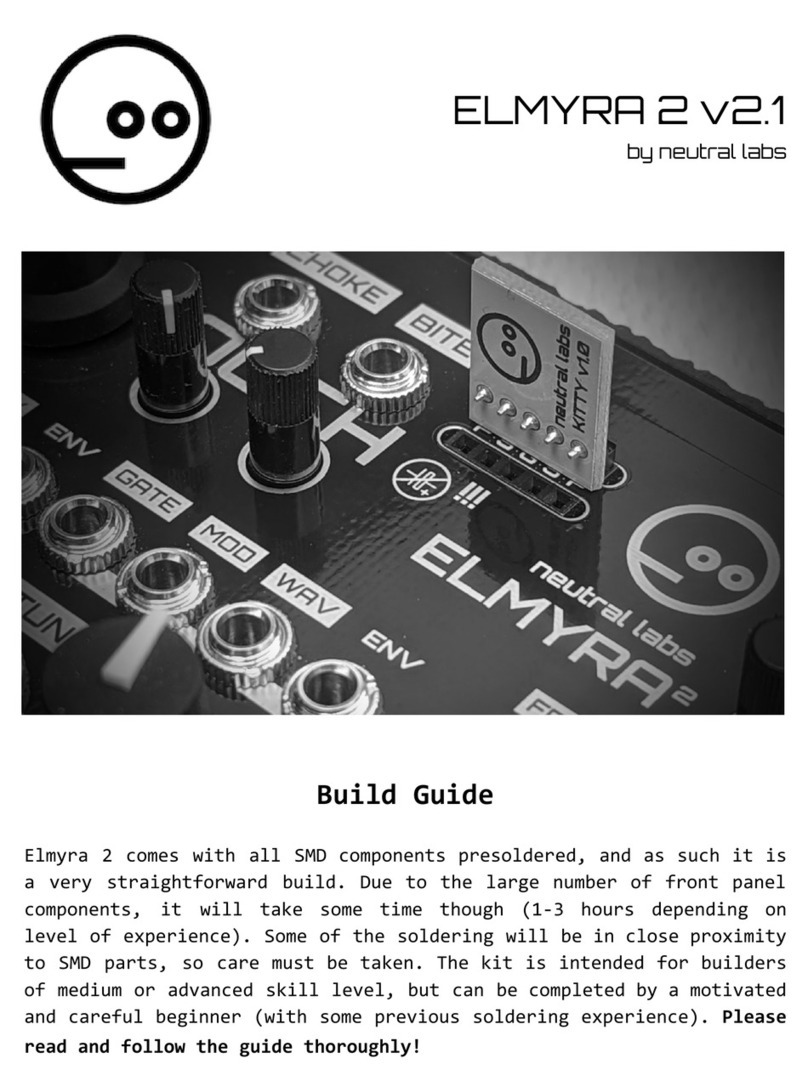MIDI OPERATION
The MIDI (Musical Instrument Digital Interface) jacks on
the PF85 allow you to connect it to other MIDI keyboards,
tone generator modules, samplers, sequencers, drum ma-
chines, computers and signal processors. This enables the
PF85 to play or be played by other synthesizers, and execute
numerous other MIDI performance functions. MIDI data
is transmitted on any of up to 16 MIDI channels. Connected
MIDI devices should normally be set to the same MIDI
channel number.
The PF85 can transmit and receive the following MIDI data:
Key On/Key Off (indicates that a note has been pressed
and released, respectively).
SETTING MIDI FUNCTIONS
Note Number (indicates which note has been pressed).
Velocity (indicates the pressure by which a note has been
played).
Foot Pedal Functions (also known as control changes).
Program Changes (Programs 1 thru 5 can be selected on
an external MIDI instrument using the PF85’s Voice Select
buttons, or PF85 voices can be selected from an external
MIDI device. The program numbers for the PF85 are as
follows: 1 — PIANO 1, 2 — PIANO 2, 3 — E PIANO, 4
— HARPSICHORD, 5 — VIBE).
Refer to the MIDI SPECIFICATIONS chapter and MIDI
Implementation Chart at the end of this manual for further
information.
1. MIDI TRANSMIT CHANNEL SELECT
MIDI data can be sent on any of up to 16 MIDI channels.
The PF85’s MIDI Transmit channel (sending channel) should
match the MIDI Receive channel of the MIDI device which
it is controlling.
Hold down the TRANSPOSE/MIDI button then press one
of the keys between C1 and D#2 to select the MIDI Transmit
channel number (as shown in the diagram at the start of the
SETTING MIDI FUNCTIONS section).
NOTE: When the PF85 power is turned on, the MIDI
Transmit channel is automatically set to 1.
2. OMNI ON/OFF, MIDI RECEIVE CHANNEL SELECT
MIDI data can be received on any of up to 16 MIDI channels.
The PF85’s MIDI Receive channel can be set to Omni On
(in which case MIDI data received on any or all of the 16
MIDI channels will be recognized) or to Omni Off (in which
case MIDI data is received only on a single selected MIDI
channel which should match the MIDI Transmit channel of
the MIDI device which it is controlling).
Hold down the TRANSPOSE/MIDI button then press the
PIANO 1 Voice Select button to switch between Omni On
and Omni Off. When the PIANO 1 LED is lit, the Omni
mode is turned off. To select the MIDI Receive channel, hold
down the TRANSPOSE/MIDI button and press one of the
keys between C3 and D#4 (as shown in the diagram at the
start of the SETTING MIDI FUNCTIONS section).
NOTE: When the PF85 power is turned on, the MIDI Re-
ceive channel is automatically set to 1, and the
OMNI mode is set to ON.
3. LOCAL ON/OFF FUNCTION
The Local On/Off function lets you select whether or not the
PF85’s internal voices will be played by its keyboard. In
normal use. this function will be set to ON. However, if you
wish to use the PF85 only as a MIDI controller keyboard
(for example. to play a MIDI tone generator module) you
can turn off the Local function, effectively isolating the PF85’s
internal voices from its keyboard, so that only the external
MIDI tone generator will produce sound when you play the
PF85. With the Local function turned off, you could also
use another external MIDI device (such as a sequencer) to
play the PF85’s internal voices.
6

